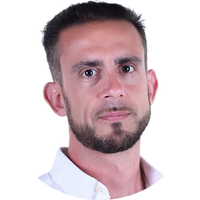How low EPC ratings can add thousands to your energy bill
Analysis by Rightmove shows the difference a top energy performance certificate rating can make to your gas and electricity bills.


Millions of UK properties have energy performance certificate (EPC) ratings below the typical grade D, research suggests.
This could be costing homeowners and renters thousands of pounds extra on gas and electricity bills.
Energy efficiency has become a key marketing point when selling a property as buyers are keen to keep their bills down, while buy-to-let landlords can only let homes with a minimum E EPC rating.
MoneyWeek
Subscribe to MoneyWeek today and get your first six magazine issues absolutely FREE

Sign up to Money Morning
Don't miss the latest investment and personal finances news, market analysis, plus money-saving tips with our free twice-daily newsletter
Don't miss the latest investment and personal finances news, market analysis, plus money-saving tips with our free twice-daily newsletter
Properties with higher EPC ratings may even command higher house prices.
New analysis by property website Rightmove suggests at least 18 million homes have an EPC rating of D or below, equating to 55% of all UK housing stock.
A homeowner or renter in the most common D-rated home would have an energy bill of £2,340 based on Rightmove's analysis.
But it could be as high as £5,674 on the lowest G rating. That means the difference between a typical D and G-rated home on average is £3,334.
This is above the current energy price cap – based on typical usage and the maximum that can be charged on a per kilowatt hour basis - of £1,690 - and more than double the new limit of £1,568 that is being introduced from July to September this year.
Room for energy improvements
An EPC is required on all homes that are listed for sale or rent and gives a buyer or renter an indication of how much energy bills could cost on a property.
Energy assessors will consider factors such as how the property is constructed, if there is any insulation and double glazing and will provide a rating of A to G.
There have been warnings from consumer watchdog Which? about the accuracy of EPC ratings but it is a useful way to see what improvements are needed and how much a home could cost to run.
Rightmove’s Energy Bills Tracker compiled average energy bill calculations based on energy consumption data from the EPCs of all three-bedroom houses for sale on the property website in May 2024.
It combined these with the latest gov.uk postcode level energy statistics, factoring in the latest energy price cap for April to June 2024.
The analysis shows that the difference in bills between homes with higher and lower energy efficiency ratings can be significant.
A top A-rated property was found to have an average energy bill of £508, rising to £2,340 for a typical D rated property of the same size.
The difference in annual energy bills between an A-rated property and G-rated property is more than £5,000.
Rightmove is urging whichever party wins the general election to prioritise making green home incentives available to as many homes as possible to help the millions that need to be improved.
“Many home-owners and landlords need urgent access to schemes that enable them to make these improvements, which could help with huge savings on energy bills,” says Tim Bannister, Rightmove’s property expert.
| EPC rating | Average annual energy bill |
|---|---|
| A | £508 |
| B | £1,039 |
| C | £1,669 |
| D | £2,340 |
| E | £3,292 |
| F | £4,431 |
| G | £5,674 |
How to improve your home's EPC rating
An EPC will often recommend work required to improve a property’s rating.
It is worth weighing up these costs and checking how much you could save annually on your bills to ensure if it worth the effort and costs.
Low-cost changes could include switching to LED lightbulbs and turning the thermostat down.
There may be more pricey and labour-intensive options depending on the size of your home such as installing loft and cavity wall insulation and changing old windows for double or even triple glazing.
“Each home requires different improvements and the upfront costs are a huge barrier to change,” adds Bannister.
“Without more help, many home-owners and tenants will continue to live in high-carbon emitting homes with high energy costs.”
Get the latest financial news, insights and expert analysis from our award-winning MoneyWeek team, to help you understand what really matters when it comes to your finances.

Marc Shoffman is an award-winning freelance journalist specialising in business, personal finance and property. His work has appeared in print and online publications ranging from FT Business to The Times, Mail on Sunday and the i newspaper. He also co-presents the In For A Penny financial planning podcast.
-
 ‘Why I have ditched my Help to Buy ISA for cash savings and the stock market’
‘Why I have ditched my Help to Buy ISA for cash savings and the stock market’Without the 25% bonus, my Help to Buy ISA is effectively redundant, says MoneyWeek writer Sam Walker.
-
 Is your inheritance tax allowance cut if you sell to downsize or sell your home to pay for care?
Is your inheritance tax allowance cut if you sell to downsize or sell your home to pay for care?Downsizing relief is a little-known benefit that could save your loved ones tens of thousands of pounds in inheritance tax after you’ve died.